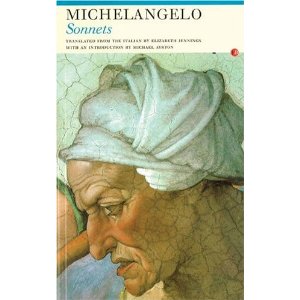POETRY IN TRANSLATION (CCCLXXXVIIL): Michelangelo Buonarroti (1475-1564), Italy/Tuscany: “Bătrâneţe”
Michelangelo Buonarroti
(1475-1564), Italy/Tuscany
Bătrâneţe
În cursul vieţii lungi ce am avut
Bătrâna barcă vântul a-nfruntat
S-ajungă-n portul unde-a ancorat
Să ispăşesc păcate din trecut.
Mânat de fantezia mea şi arta
Din care am creat un Dumnezeu
Iluziile şi vanitatea, tot mereu
M-au amăgit, ademenindu-mi soarta.
Visul de-amor acum e prea puţin…
Ce-oi deveni, să mor de două ori,
O dat-aici şi-o alta la răscruce …
Sculptura, arta nu mai pot să-nchin
Când Duhul Sfânt mă chiamă-n zi de zori
Să fiu martir cu braţele pe cruce.
Rendered in Romanian by Constantin ROMAN, London,
© 2016 Copyright Constantin ROMAN
* * * * * * * *
SHORT NOTE ON MICHELANGELO’S SONNETS: Most famous for painting the Sistine Chapel and his sculpture of David, the Italian Renaissance artist Michelangelo was also a prolific poet, in his lifetime penning more than 300 sonnets and madrigals. It is in his poetry that many critics have seen present the clearest evidence of his homosexual leanings. The openly homoerotic nature of the poetry has been a source of discomfort to later generations. Michelangelo’s grandnephew, Michelangelo the Younger, published them in 1623 with the gender of pronouns changed, and it was not until John Addington Symonds translated them into English in 1878 that the original genders were restored. Even in modern times some scholars continue to insist that, despite the restoration of the pronouns, the sonnets represent “an emotionless and elegant re-imagining of Platonic dialogue, whereby erotic poetry was seen as an expression of refined sensibilities”. (Wikipedia)



No Comments so far ↓
Like gas stations in rural Texas after 10 pm, comments are closed.